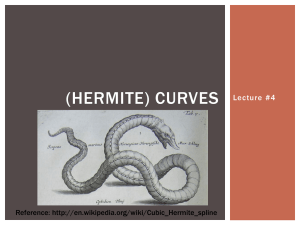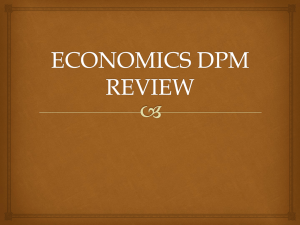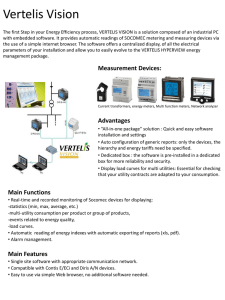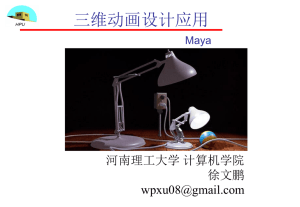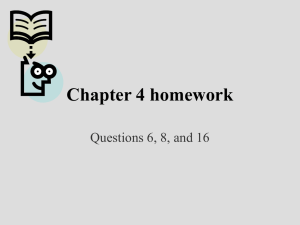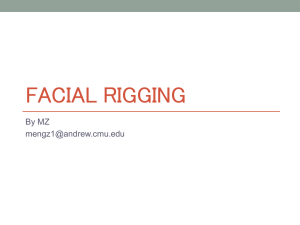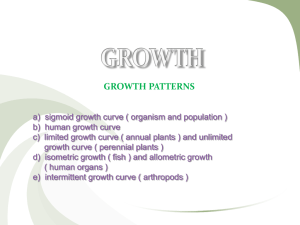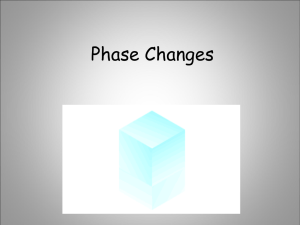Track Design Na
advertisement
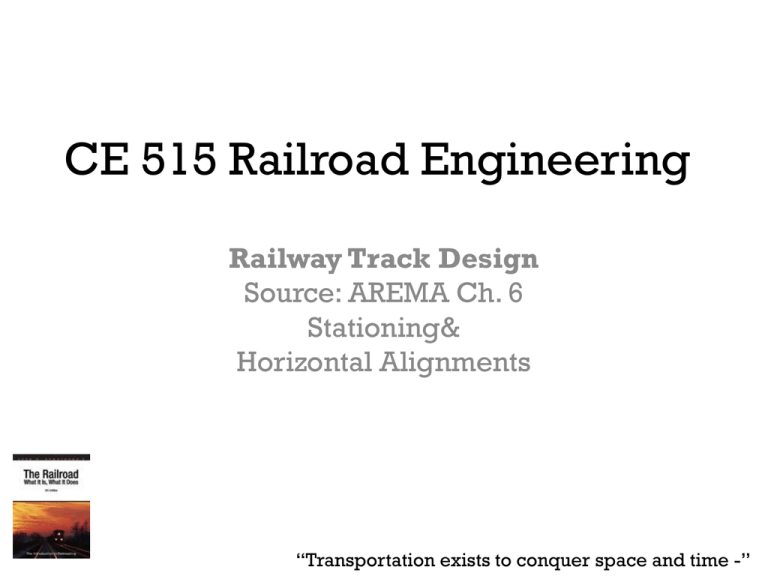
CE 515 Railroad Engineering Railway Track Design Source: AREMA Ch. 6 Stationing& Horizontal Alignments “Transportation exists to conquer space and time -” Railway Track Design Key factors for rail alignment • Operator has no control over horizontal movement • Less relative power available for locomotion relative to the mass to be moved • Long and thin physical dimension Railway Track Design Considerations for designing rail alignments • Type of train traffic • Volume of traffic • Speed Stationing Stationing • A single station: 100 feet long from beginning point to end point Milepost • Less precise, but more easily identified Horizontal Alignments Two components: Tangents and Curves Tangents: established first • A straight line between two points • Denoted with bearings – Need a starting point and length to locate in space Curves: established based on tangents • Point of Intersection (PI) - fixed • Define the tangents • Points of curve defined subsequently Horizontal Curves Important components of simple circular curve • Angle of Deflection (I) • Other aspects – see figure Source: AREMA Degree of Curve Source: AREMA Curves: Chord and Arc Definitions • Differences between two definition are slight at small degrees of curves • But increase as curves get sharper • North America freight railways use chord-defined – Highway design, some light rail system and other alignments design use arc-defined Curves • Note: the radius of a four-degree curve is not exactly half of that of a two-degree curve Source: AREMA Centrifugal Force • Can be counteracted by superelevation – Equilibrium elevation, allow more uniform speed Source: AREMA Horizontal Alignments Under-balance • Difference between the equilibrium elevation and the actual superelevation • Limited to three inches by FRA Source: AREMA pg.224 Spiral Curves • Transition from tangent level track to curved superelevated track • Two functions – Gradual introduction of superelevation – Guiding the train from tangent track to curved track Types of Spirals • Commonly used: the Searles, the Talbot, and the AREMA 10-chord spiral • Two Design Criteria – Rotational acceleration of the train about its longitudinal axis – Limiting value of twist along car body Recommended formula for the minimum length of spiral on AREMA pg. 225 Questions?

